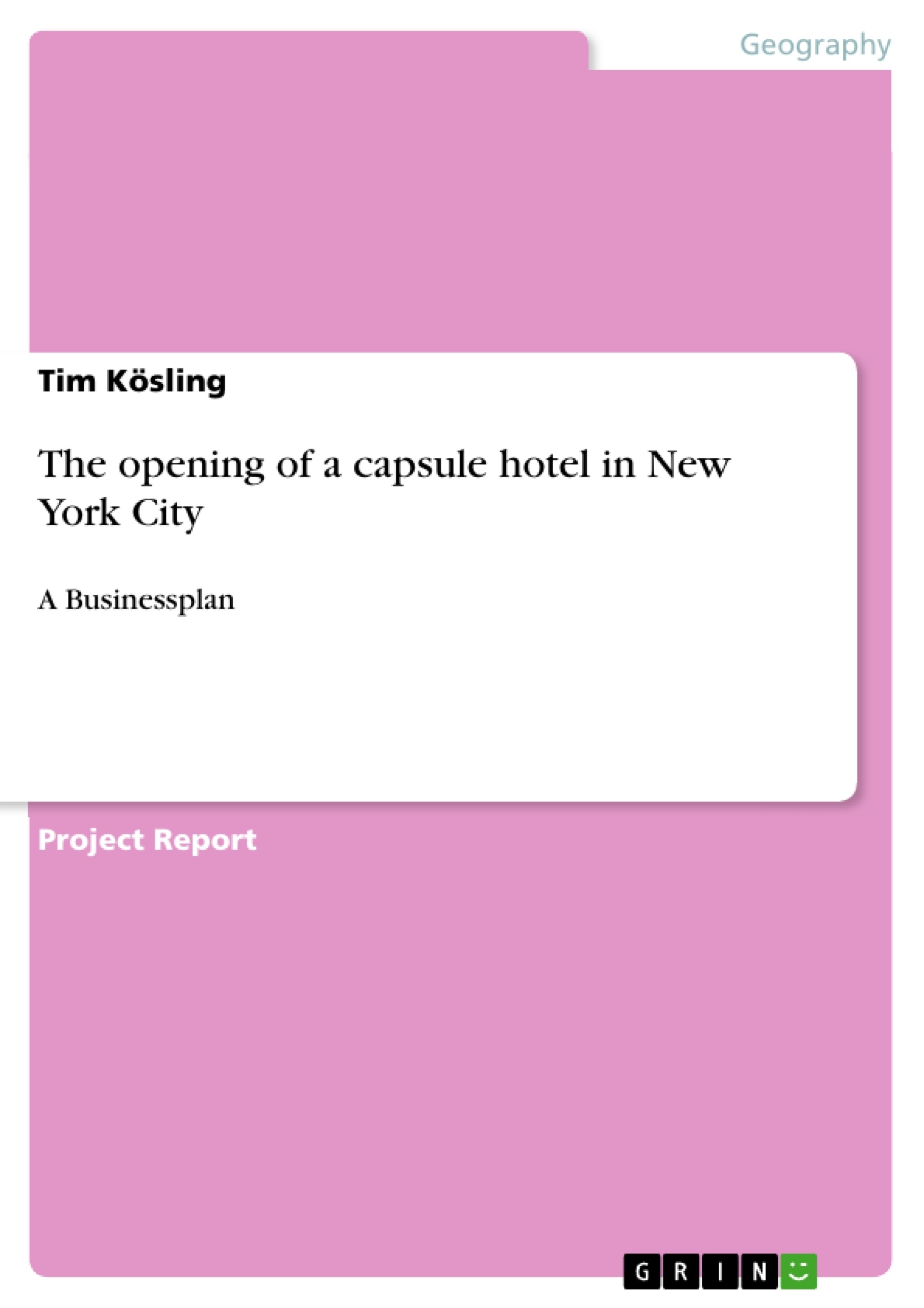This paper examines a business plan for a hotel in New York. It shows how a Capsule Hotel can be established in the City. With opening the first capsule hotel in Manhattan, resting and recharging one’s batteries will become more convenient than it ever has.
On grounds of our vision “A New York City trip for an affordable budget” we want to cheapen and regenerate the way of staying in NYC. Our capsule hotel offers the most enjoyable sleepover in terms of price, comfort, amenities and flair.
Global trends such as minimalism, globalization, urbanization and shared econ-omy offer the best preconditions a capsule hotel could possibly have. By opening our capsule hotel in the middle of the touristic center of New York City, we sat-isfy everything a NYC traveler on a budget would need.
Table of Contents
- Executive Summary
- Business Idea
- Vision
- Mission
- Internal & external Analysis (SWOT)
- Competitive Analysis
- Strategy
- Short-term goals
- Mid-term goals
- Long-term goals
- Structure of the company
- Legal form
- Entrepreneurial team
- Organization
- Milestones
- Marketing Plan
- Pricing
- Communication
- Distribution
- Financials
- Framework
- Revenue
- Cost
- Financial plan
- Plan-/Scenario-Calculation
- Break even analysis
Objectives and Key Themes
This business plan outlines the establishment of a capsule hotel in New York City, aiming to provide affordable and comfortable accommodations for tourists and local workers. The plan explores the feasibility of the business concept, analyzes the competitive landscape, and outlines a comprehensive marketing and financial strategy.
- The emergence of capsule hotels as a viable accommodation option in response to growing tourism and urbanization trends.
- The importance of strategic location and efficient space utilization to achieve price leadership and attract a target audience of budget-conscious travelers.
- The development of a comprehensive marketing plan to reach the target market and differentiate the capsule hotel through a modern and stylish atmosphere.
- The creation of a financial plan that includes investment costs, operating expenses, revenue projections, and a clear path to profitability.
- The utilization of external consultants to leverage expertise and ensure the successful implementation of the business concept.
Chapter Summaries
- Executive Summary: This section presents a concise overview of the business plan, highlighting the vision, key objectives, and anticipated outcomes of the capsule hotel venture.
- Business Idea: This chapter details the concept of the capsule hotel, emphasizing its unique features, target audience, and potential advantages over traditional accommodations. It also includes a SWOT analysis, identifying the strengths, weaknesses, opportunities, and threats associated with the venture.
- Structure of the company: This chapter outlines the legal structure of the capsule hotel, including the chosen legal form, the composition of the entrepreneurial team, and the proposed organizational structure. It also discusses the key milestones in the project’s development.
- Marketing Plan: This chapter delves into the marketing strategies designed to reach the target audience. It covers pricing models, communication channels, and distribution methods, aiming to effectively promote the capsule hotel and attract customers.
- Financials: This chapter focuses on the financial aspects of the project. It includes a breakdown of investment costs, operating expenses, revenue projections, and a comprehensive financial plan that outlines the path to profitability.
Keywords
The key concepts and themes explored in this business plan include capsule hotel, affordable accommodations, tourism, urbanization, price leadership, competitive analysis, marketing strategy, financial planning, and business development. The plan emphasizes the importance of efficient space utilization, target market segmentation, and sustainable growth strategies in achieving profitability and long-term success.
- Quote paper
- Tim Kösling (Author), 2019, The opening of a capsule hotel in New York City, Munich, GRIN Verlag, https://www.grin.com/document/937245




